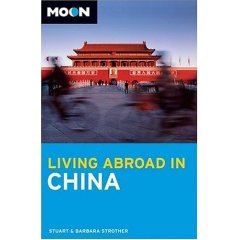Howard French has an article in this morning’s New York Times on middle-class activism in Shenzhen. Two years ago, local residents learned of city plans to build an expressway right through the middle of their neighborhood. But these weren’t your typical, ordinary peasants or hutong dwellers. They were part of China’s new latte set: China’s growing urban middle class. Led by former rocket scientist Qian Shengzeng, local residents organized and protested to the Shenzhen municipal government. Finally, after two years of fighting, authorities agreed to compromise and change the route of the proposed highway and also agreed to design changes that limit the environmental impact of the roadway.
It was no accident that the battle was waged in Shenzhen, a 26-year-old boomtown that was the first city to enjoy the effects of China’s breakneck economic expansion and that has served as a model for cities throughout the country.
Increasingly, though, with its growing pains multiplying, Shenzhen looks like a preview, even a warning, of the limitations of the kind of growth-above-all approach that has gripped much of China.
But Shenzhen may also herald more promising changes. Possibly the greatest force taking shape here is the quiet expansion of the middle class, thicker on the ground here than perhaps anywhere else in China. This middle class is beginning to chafe under authoritarian rule, and over time, the quiet, well-organized challenges of the newly affluent may have the deepest impact on this country’s future.
Since the 1980s, there has been a theory that a growing middle class in China would be the catalyst for change as a new urban elite emerges to challenge the authoritarian rule of the CCP. Supporters of this argument point to similar changes in South Korea and Taiwan in the 1970s and 1980s. The more skeptical would say that this is hogwash and that China’s middle class is too small and too absorbed with making money and economic status to challenge the party. Moreover, the legacies of the Cultural Revolution and the 1989 Tiananmen Square protests left those Chinese with the greatest economic resources, the urban elite between the ages of 35 and 55, with little desire to engage in political dissent.
Whether or not the urban middle class is yet a force for national change is doubtful. But the recent experience of Shenzhen’s Professor Qian and his neighbors show that this new elite can create change at the local level. And when you want to change something big, sometimes it’s best to start small.

Comments